I know some things aren’t for me: The sitcom Friends, a small bowl exclusively filled with olives as a side dish, V-neck t-shirts. But I appreciate that while I might not get on with them, many others will enjoy the bite of an olive on its own, or the increased airflow to their larynx as they chortle at Joey doing the silly thing he does at Rachel, or whatever. Ghostrunner 2, a first-person cyberpunk slasher and sequel to Ghostrunner, has joined the echelon of things that aren’t for me but might be for you.
That’s because the game’s relentlessly unforgiving, and sets margins so small you’re rarely afforded much freedom. Sometimes it really does put you in the RGB kicks of a cyber ninja as you dash between the halves of cyborgs you’ve cleaved in two, but these moments can often be the weary culmination of agonising trial and error. If you’re into that, great! If you’re not, then I’d slink back into that shadow.
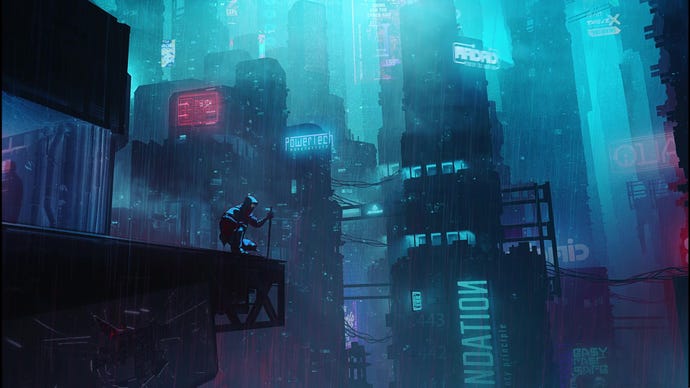
Ghostrunner 2 follows on from the events of the first game and sees you reprise your role as Jack, a metallic ninja who’s basically a legally distinct Genji from Overwatch. This time Dharma, a big tower where people live, is under siege from an AI cult of other metallic ninjas who have shining red eyes and speak of things like everlasting power. You are to hunt them down and slice them to bits, which is what you’ll end up doing, but it’s about as gripping a tale as the “about us” page on Lloyd’s Bank. Don’t expect to build a lasting bond with any of the folks you’ll speak to over the radio either, because they like irritating small talk and Jack feeds them with short, gruff responses.
Nonetheless, your route to murdering the baddies is split across missions that took me around 10 hours to complete, much to my relief. For the most part they’re linear platforming sections where you run along walls and dash and grind on rails, stitched together by bouts against cyborgs in arenas filled with boost pads. Only once you’ve sliced all the baddies up with your katana are you allowed to move on.
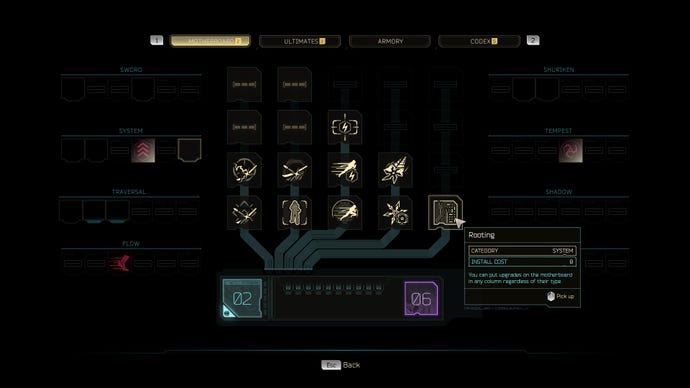
To navigate most challenges you’ll rely heavily on dashes, well-timed jumps to hops, and the grappling hook. Some of the game’s greatest thrills stem from a steady flow of these three things, as you skip between grind rails to avoid incoming laser beams, monkeybar into a cool kneeslide, crash through a wall, then grapple across a ledge into a wallrun. I’m convinced Ghostrunner 2’s greatest joys lie in these sections of solace, where your focus is uninterrupted by anything else.
Later, as you gain the ability to chuck shurikens or blast enemies backwards, platforming sections become a little more complex. You might have to grind along rails, but instead of just dodging those lasers you’ve got to chuck shurikens at blue buttons to make the door in front of you open up. While tricky, I liked how slight puzzley bits added some extra spice to platforming, although the game does then develops a frustrating habit of disrupting your momentum by conveniently closing doors and asking you to find “another way around”.
You can’t knock the game’s drive to keep things fresh, though, as you jack into cyberspace and take on platforming challenges that conform to different rules: suddenly your jumps are floatier; orbs of a different colour need to be destroyed in a certain sequence as a clock ticks down; tokens let you double jump, so you’re sort of cashing them in to bounce up and between obstacles like flappy bird. At one point you barrel down the side of the tower on a cyberbike, then take it for a thrash around a desert.
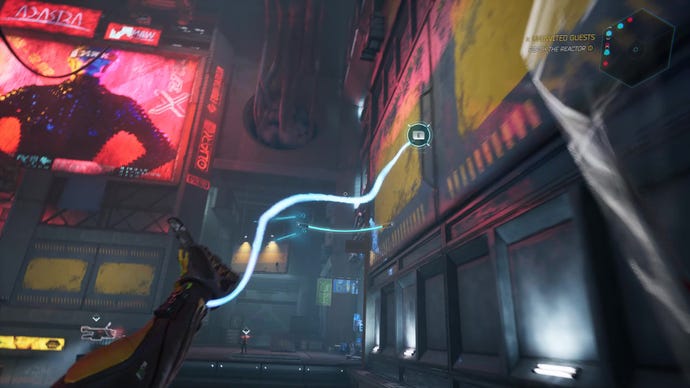
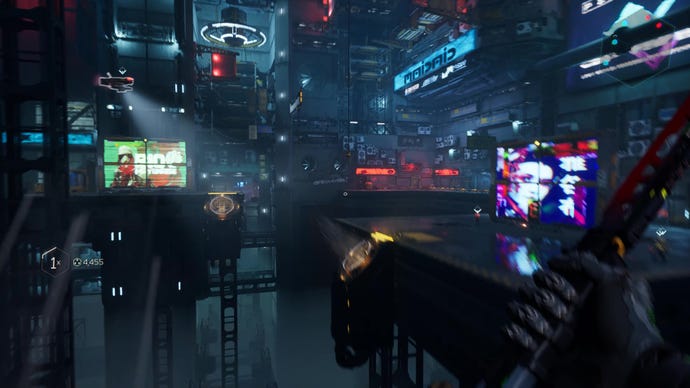
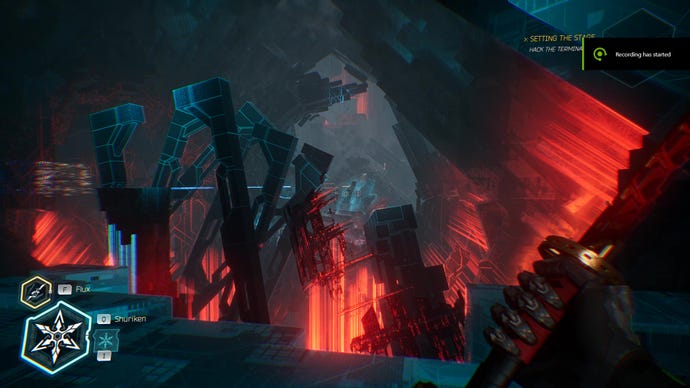
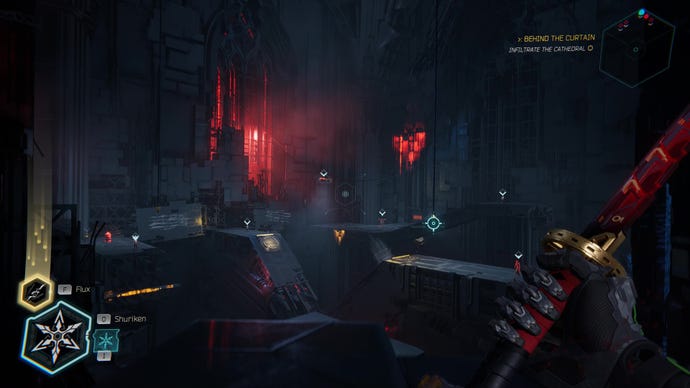
Easily one of my favourite slices of the game lies in a mission where you’re given a wingsuit to glide between vents that propel you upwards, resetting your ability to whizz through tight gaps and soar across bigger ones. The wingsuit elevates the game’s arenas by bringing airspace into the mix, marrying puzzling, movement, and combat in a rare instance where it enabled me to experience the thrill of the fight for once.
For those with sharp reflexes and infinite patience, the Ghostrunner 2’s combat won’t be a problem. If anything, you might be able to pull off silky manoeuvres with ease and slice everything to ribbons like a Russell Hobbs-branded pinball. And there were a handful of instances I managed to pull off some cool things, as the tools you’re given can help alleviate the pressure of fights against multiple lads. Shurikens can stun robots, turning them into helpful grapple points to cover ground quickly. Leave a decoy behind and enemies will focus on it briefly, giving you a chance to slice the worst of the bastards. Hold the dash button and you’re given a slow-mo window to strafe out the way of oncoming laser beams.
But again, the game’s teaching methods lie in trial and error, in a similar vein to platformers like Celeste. Unless you’re an absolute demon, most fights may not be as open-ended as the game’s tools tout. There’s often clearly a best route through these arenas, and most fights become an exercise in input repetition where straying from the script means a bullet to the back of the head. Did I mention everything in this game just murders you instantly? I died so often to dudes who shoot you in the arse from miles away, just as I was about to get in the rhythm of things. In the end, I opted for the path of least resistance: being as uncool and boring as possible.
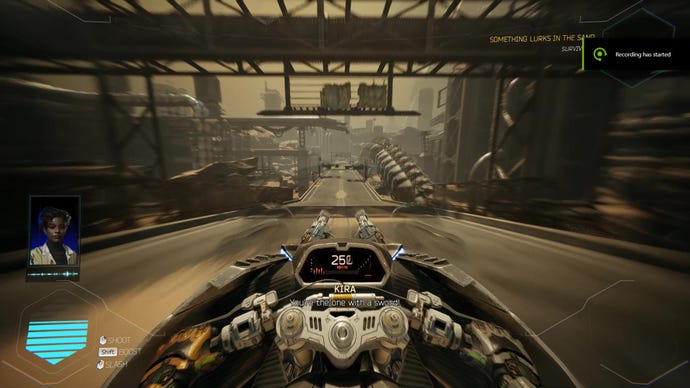
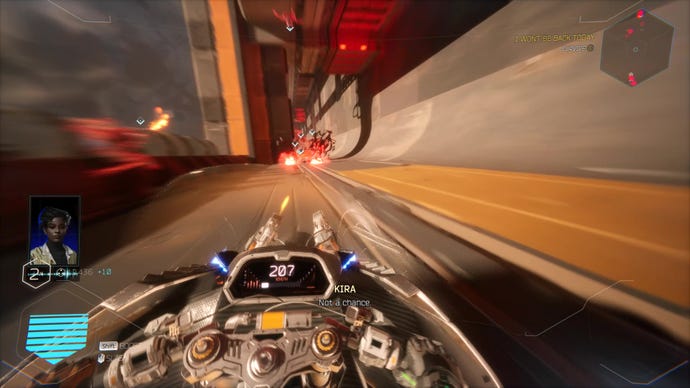
And as much as I sing the praises of the platforming, much of my time was marked by me wanting to place a fist through the nearest available surface. So often I found myself just not making a ledge or just dribbling off a wall and dying. If you’re not prepared to meet its demands, the game will piss you off to no end. Then again, you’ve got to wrangle platforming that feels imprecise and, at times, as if you’re less of a ninja and more a slice of EVA foam somehow drawn magnetically to every surface with a snap. Scurrying across walls or scampering over ledges is fluid in the sense of connecting them together in sequence, but you must adjust to movement that feels quite abrupt whenever you hit a surface.
Despite my misgivings, I think plenty of people with the right mindset and fast-twitch muscle fibers will enjoy Ghostrunner 2 and its demands. There’s a lot of variety on offer here, whether that lies in options to slice foes or just veering between bikes and cyber realms and large areas. But for the rest of us who aren’t as enamoured by relentless trial and error challenges, I’d find it a difficult one to recommend.
This review is based on a review build of the game provided by publishers 505 Games.
This post was originally published on this site be sure to check out more of their content.








